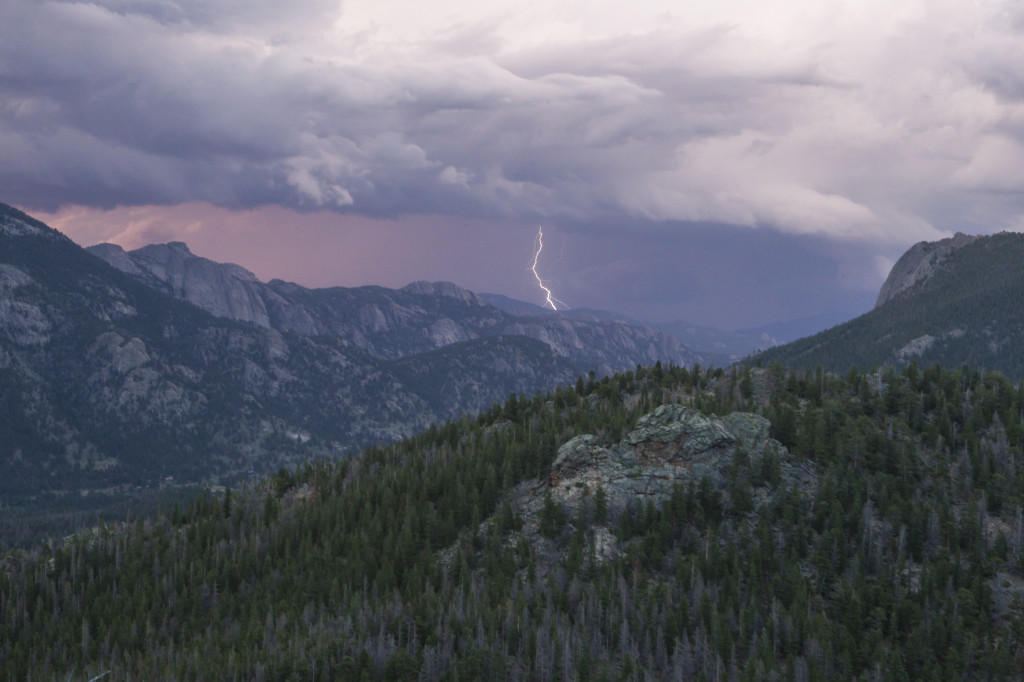 Sad news from Rocky Mountain National Park today as a woman was killed by a lightning strike on the Ute Trail and seven other people were injured. This time of year in the high country, it is quite typical to get afternoon thunderstorms, and the danger of lightning is a reality that hikers and residents live with. Many a hiker who is attempting a Fourteener has been caught up in “summit fever” and paid the ultimate price by losing their life because of a lightning strike. Colorado is ranks second in terms of lightning fatalities during the last ten years. It is something I am very aware of working at the national park, and can not stress enough to visitors.
Sad news from Rocky Mountain National Park today as a woman was killed by a lightning strike on the Ute Trail and seven other people were injured. This time of year in the high country, it is quite typical to get afternoon thunderstorms, and the danger of lightning is a reality that hikers and residents live with. Many a hiker who is attempting a Fourteener has been caught up in “summit fever” and paid the ultimate price by losing their life because of a lightning strike. Colorado is ranks second in terms of lightning fatalities during the last ten years. It is something I am very aware of working at the national park, and can not stress enough to visitors.
So many of our visitors worry about being attacked by a mountain lion or other wildlife in the park. My response is frequently, “but are you worried about lightning?” Anyone who is outdoors in the summer in the high mountains of the west is at risk, and in fact, you are probably 650 times more likely to be struck by lightning than be attacked by a mountain lion. I am so acutely aware of the dangers of it, that when I am conducting outdoor programs, I usually start off by explaining that we could get bad weather at any time. I go on to say that if dark clouds move in, if we even hear one rumble of thunder, the program is over and everyone needs to head to the parking lot as quickly as possible.
Visitors to Rocky Mountain are especially at risk since 11 miles of our famous Trail Ridge Road traverse across the tundra, where it is wide open. It astounds me how many times I have been on Trail Ridge Road, with thunder and lightning, and yet still people are walking out on trails out to overlooks. One of the things I’ve realized is I can only try to educate, and do the right thing myself to serve as a good example, but can not ultimately make people do what I think they should.
There’s a famous picture of some kids in Sequoia National Park in the 1970s who were standing atop Moro Rock with their hair standing straight out. Moments later, one of them was struck by lightning as they were descending. They didn’t know that meant that they were in imminent danger. Static electricity, buzzing in the air all mean that lightning is in the immediate area. Fortunately for me, I am married to a meteorologist, who is quite attuned to the conditions and has often turned us around on hikes due to threatening weather. I am so grateful that he has the knowledge and foresight to do so. As they say, it’s best to be safe than sorry, and this time of year we need to err on the side of caution when it comes to lightning danger.

